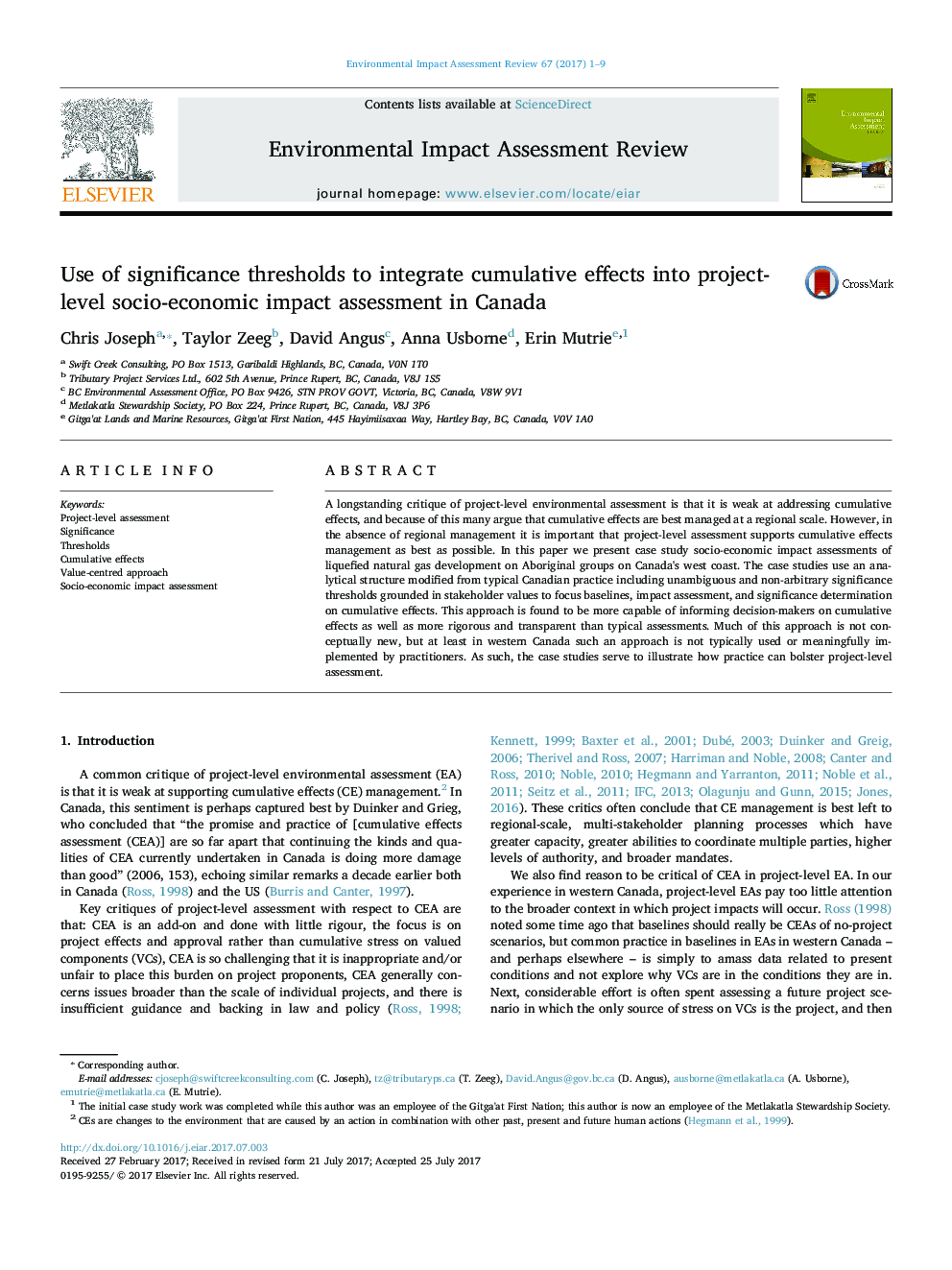| Article ID | Journal | Published Year | Pages | File Type |
|---|---|---|---|---|
| 5115609 | Environmental Impact Assessment Review | 2017 | 9 Pages |
Abstract
A longstanding critique of project-level environmental assessment is that it is weak at addressing cumulative effects, and because of this many argue that cumulative effects are best managed at a regional scale. However, in the absence of regional management it is important that project-level assessment supports cumulative effects management as best as possible. In this paper we present case study socio-economic impact assessments of liquefied natural gas development on Aboriginal groups on Canada's west coast. The case studies use an analytical structure modified from typical Canadian practice including unambiguous and non-arbitrary significance thresholds grounded in stakeholder values to focus baselines, impact assessment, and significance determination on cumulative effects. This approach is found to be more capable of informing decision-makers on cumulative effects as well as more rigorous and transparent than typical assessments. Much of this approach is not conceptually new, but at least in western Canada such an approach is not typically used or meaningfully implemented by practitioners. As such, the case studies serve to illustrate how practice can bolster project-level assessment.
Related Topics
Physical Sciences and Engineering
Energy
Renewable Energy, Sustainability and the Environment
Authors
Chris Joseph, Taylor Zeeg, David Angus, Anna Usborne, Erin Mutrie,
